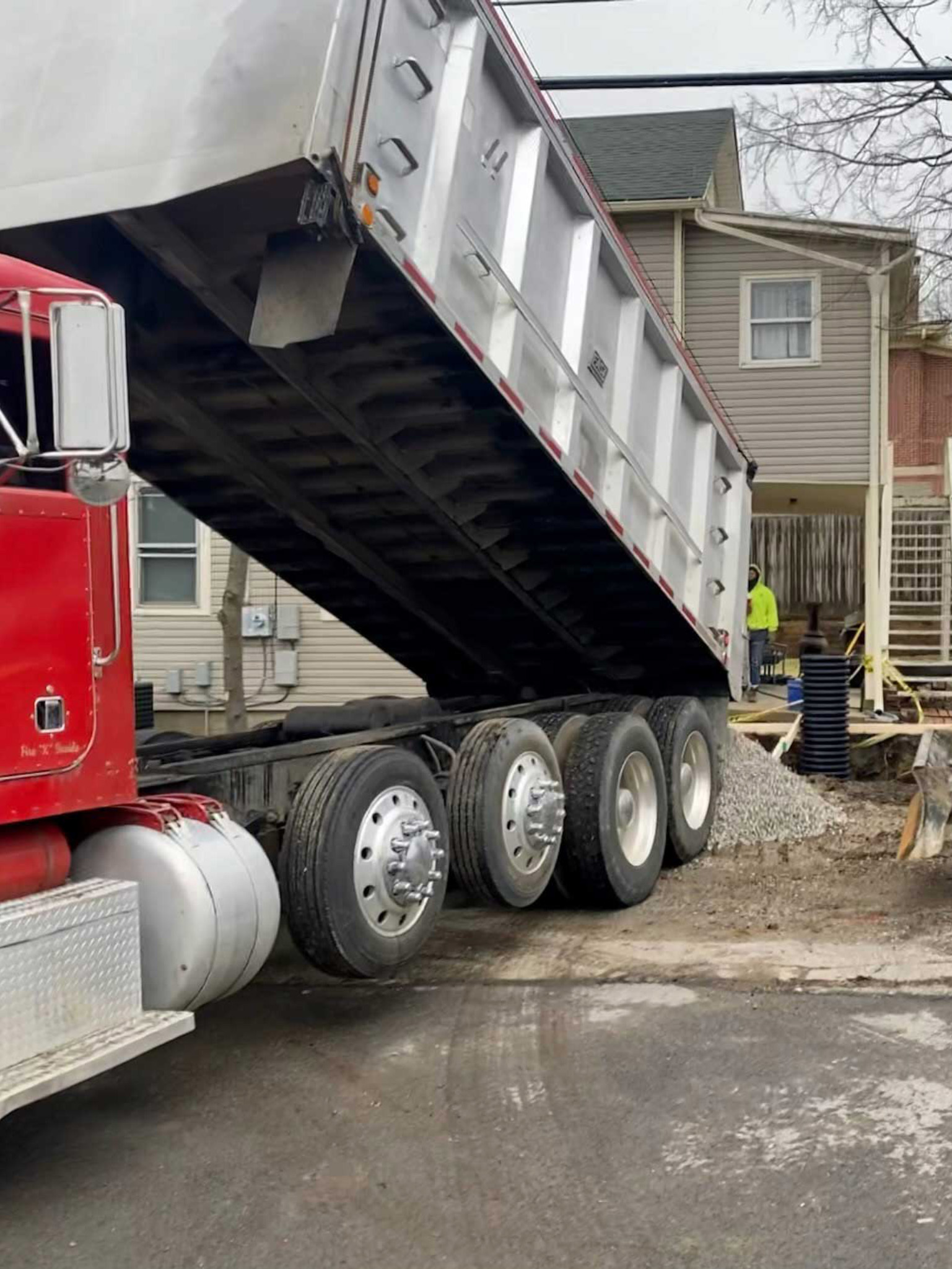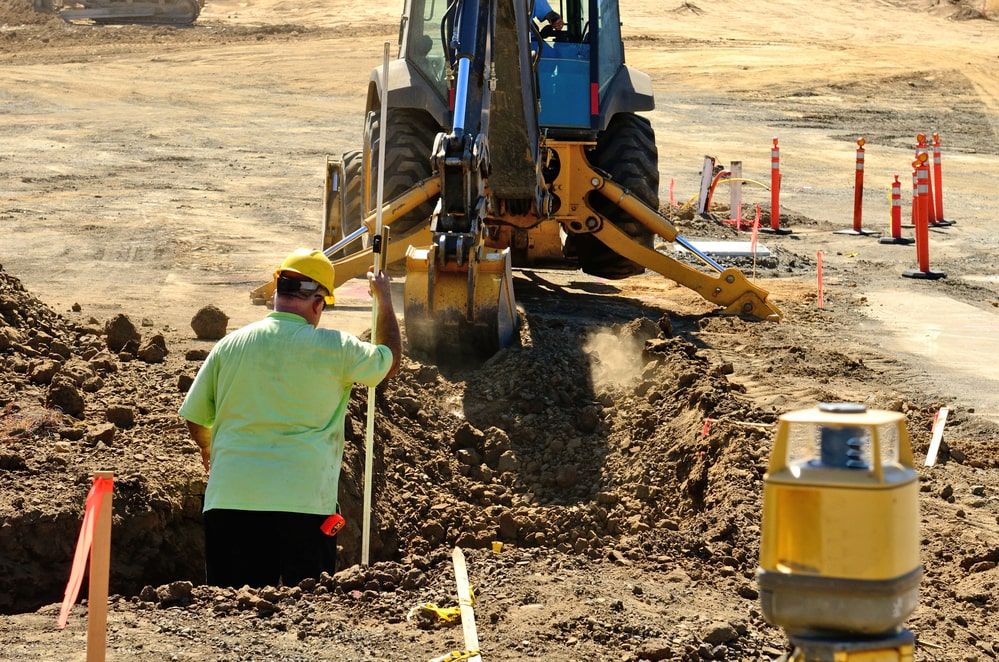Lancaster Excavation - Expert Excavation Providers in Lancaster, OH
Lancaster Excavation - Expert Excavation Providers in Lancaster, OH
Blog Article
Introducing the Art of Excavation: Pro Tips for Safe and Productive Digging
In the realm of excavation, the proficiency of productive and risk-free digging is an art kind that calls for precision, knowledge, and adherence to established practices. As soil is transformed and earth is relocated, the details of excavation disclose themselves, demanding a keen understanding of tools, dirt structure, safety and security protocols, and ecological considerations. The competence needed to navigate these aspects successfully can indicate the difference in between an effective excavation task and a possible disaster. By deciphering the layers of this intricate procedure, a world of understandings and techniques awaits those looking for to elevate their excavation abilities to brand-new elevations.
Significance of Correct Tools
To ensure the safety and security and efficiency of any type of excavation project, making use of the ideal equipment is extremely important. Excavation jobs vary in scope and intricacy, ranging from tiny residential landscape design jobs to massive building undertakings.
Excavators are essential pieces of equipment in any type of excavating procedure. These versatile machines come in various sizes to match different job demands. Small excavators are excellent for smaller jobs, while larger excavators tackle a lot more extensive projects successfully. Backhoes are another essential tools type, combining the features of a loader and an excavator in one machine. They are useful for jobs requiring adaptability and ability to move.
Bulldozers stand out in jobs that call for pushing huge quantities of dirt or particles. By spending in the proper devices, excavation projects can be finished securely, on time, and with precision.
Comprehending Dirt Composition
A detailed understanding of dirt structure is basic for executing excavation tasks with precision and safety and security. Recognizing the different types of soil is essential as it directly influences excavation techniques, tools option, and overall job performance.
Sand particles are the biggest and give great drainage yet offer little cohesion. Silt fragments are smaller sized than sand but larger than clay, supplying moderate drain and communication. Clay fragments are the smallest and give high cohesion yet inadequate drain. Raw material, such as rotting plant product, impacts soil fertility and stability.
Before starting excavation, performing soil tests to determine its make-up and characteristics is crucial. This details aids in choosing the suitable devices, applying precaution, and creating excavation techniques tailored to the particular soil conditions - lancaster excavation. By understanding dirt composition, excavation experts can enhance job results while making certain security and adherence to ideal techniques
Precaution and Methods
Understanding soil composition is the foundation upon which precaution and protocols for excavation jobs are built, guaranteeing the wellness of employees and the success of the endeavor. When it comes to safety during excavation, there are several key measures that must be applied to minimize threats and prevent mishaps.
Firstly, prior to any type of excavating begins, a complete examination of the site should be performed to recognize any prospective dangers such as below ground utilities, unstable dirt problems, or close-by frameworks internet that can present a danger. It is crucial to have a proficient person manage the excavation process to guarantee that all security methods are adhered to strictly.
Furthermore, all employees entailed in the excavation must be properly educated in secure excavating techniques and the proper procedure of devices. By sticking to these security steps and procedures, excavation jobs can be completed effectively and without event.
Efficient Excavation Planning
When getting started on an excavation project, meticulous planning is vital to guarantee performance, security, and effective end results. Reliable excavation planning involves several essential actions that are essential for the smooth execution of the job. The initial step is to conduct a comprehensive website evaluation to identify any possible dangers, such as below ground energies or unpredictable dirt conditions. This information is essential for establishing a detailed excavation plan that includes precaution and run the risk of mitigation approaches.
When the website assessment is complete, the next step important site is to develop a clear timeline and routine for the excavation tasks. This includes establishing the series of jobs, devices needs, and manpower allowance. Correct scheduling assists avoid delays and makes certain that the project stays on track.

Furthermore, interaction amongst all staff member is vital throughout the preparation stage. Clear instructions, normal updates, and reliable control are important for a successful excavation task. By investing effort and time in thorough planning, excavation teams can considerably improve efficiency, decrease threats, and attain effective results.

Taking Care Of Ecological Factors To Consider
With you could check here enhancing focus on ecological sustainability in construction techniques, handling environmental considerations has come to be an important aspect of excavation tasks. Excavation activities have the possible to impact the surrounding atmosphere through soil disintegration, debris overflow, environment disruption, and contamination of water sources. To alleviate these dangers, it is essential to apply best techniques that prioritize ecological defense.

Moreover, appropriate waste management is crucial to stop soil and water contamination. Implementing treatments for the disposal of unsafe materials, recycling of waste materials, and decreasing making use of damaging chemicals can significantly reduce the environmental impact of excavation tasks. By integrating these practices right into excavation planning and execution, construction firms can make certain that their jobs are not only safe and effective yet additionally ecologically liable.
Final Thought
In conclusion, understanding the art of excavation requires a comprehensive understanding of proper tools, soil structure, security measures, and reliable planning. By following these standards and thinking about environmental variables, excavations can be conducted securely and efficiently. It is vital to prioritize safety and security and performance in every digging project to make certain effective results.
As dirt is transformed and earth is relocated, the details of excavation expose themselves, demanding an eager understanding of equipment, soil structure, safety protocols, and ecological considerations.To guarantee the security and efficiency of any kind of excavation project, utilizing the ideal equipment is critical.A comprehensive grasp of dirt composition is essential for performing excavation jobs with accuracy and security. Understanding the various types of soil is vital as it directly affects excavation approaches, equipment choice, and total project effectiveness. By comprehending dirt make-up, excavation specialists can enhance project outcomes while guaranteeing security and adherence to finest methods.
Report this page